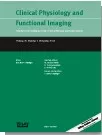Blood flow (BF) in exercising muscles is an important factor for exercise capacity. Recently, a non-invasive method to estimate capillary BF (Qcap) was introduced. Using this method, the Fick principle is re-arranged by using relative differences in deoxygenated haemoglobin (DHHb) as a surrogate for arteriovenous O2 difference and pulmonary oxygen uptake (VO2) instead of muscular oxygen uptake. The aim of this study was to examine (I) the relationship between Qcap and exercise intensity during and following exercise, and (II) to critically reflect the Qcap approach. Seventeen male subjects completed six bouts of cycling exercise with different exercise intensities (40–90% peak oxygen uptake, VO2peak) in randomized order. VO2 and DHHb were monitored continuously during the trail. Qcap was modelled bi-exponentially, and mean response time (MRT) was calculated during recovery as well as the dissociation of modelled VO2 and Qcap recovery kinetics (MRT/sVO2). End-exercise Qcap increased continuously with exercise intensity. This also applied to MRT. Postexercise MRT/sVO2 increased from 40 to 60% VO2peak but remained stable thereafter. The results show that Qcap response to exercise is linearly related to exercise intensity. This is presumably due to vasoactive factors like shear-stress or endothelial-mediated vasodilation. MRT/ sVO2 shows that postexercise Qcap is elevated for a longer period than VO2, which is representative for metabolic demand following exercise ≥70% VO2peak. This is a hint for prolonged local vasodilation. According to previous studies, Qcap could not be modelled properly in some cases, which is a limitation to the method and therefore has to be interpreted with caution.
Authors: F. Stöcker1, C. Von Oldershausen1, F. K. Paternoster2, T. Schulz3 and R. Oberhoffer3
1 Center for Teaching and Learning, Technical University Munich,
2 Department for Biomechanics in Sports, Technical University Munich
3 Department for Preventive Pediatrics, Technical University Munich
